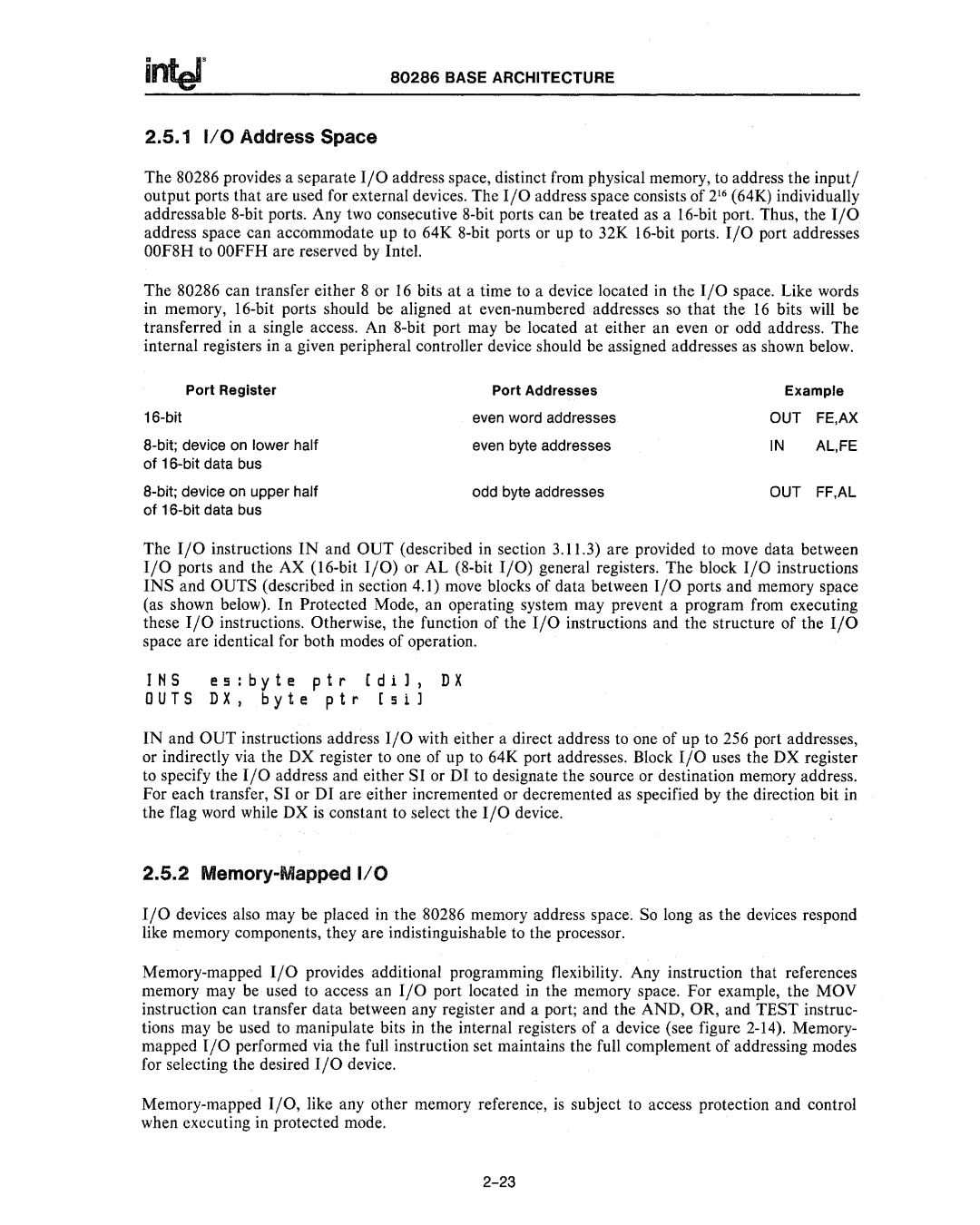
80286 BASE ARCHITECTURE
2.5.11/0 Address Space
The 80286 provides a separate I/O address space, distinct from physical memory, to address the input/ output ports that are used for external devices. The I/0 address space consists of 216 (64K) individually addressable
The 80286 can transfer either 8 or 16 bits at a time to a device located in the I/O space. Like words in memory,
Port Register | Port Addresses | Example | |
even word addresses | OUT | FE,AX | |
even byte addresses | IN | AL,FE | |
of |
|
|
|
odd byte addresses | OUT | FF,AL | |
of |
|
|
|
The I/0 instructions IN and OUT (described in section 3.11.3) are provided to move data between I/0 ports and the AX
INS es:byte ptr [dil, DX
OUTS DX, byte ptr [sil
IN and OUT instructions address I/O with either a direct address to one of up to 256 port addresses, or indirectly via the DX register to one of up to 64K port addresses. Block I/0 uses the DX register to specify the I/0 address and either SI or DI to designate the source or destination memory address. For each transfer, SI or DI are either incremented or decremented as specified by the direction bit in the flag word while DX is constant to select the I/0 device.
2.5.2 Memory-Mapped 1/0
I/0 devices also may be placed in the 80286 memory address space. So long as the devices respond like memory components, they are indistinguishable to the processor.
